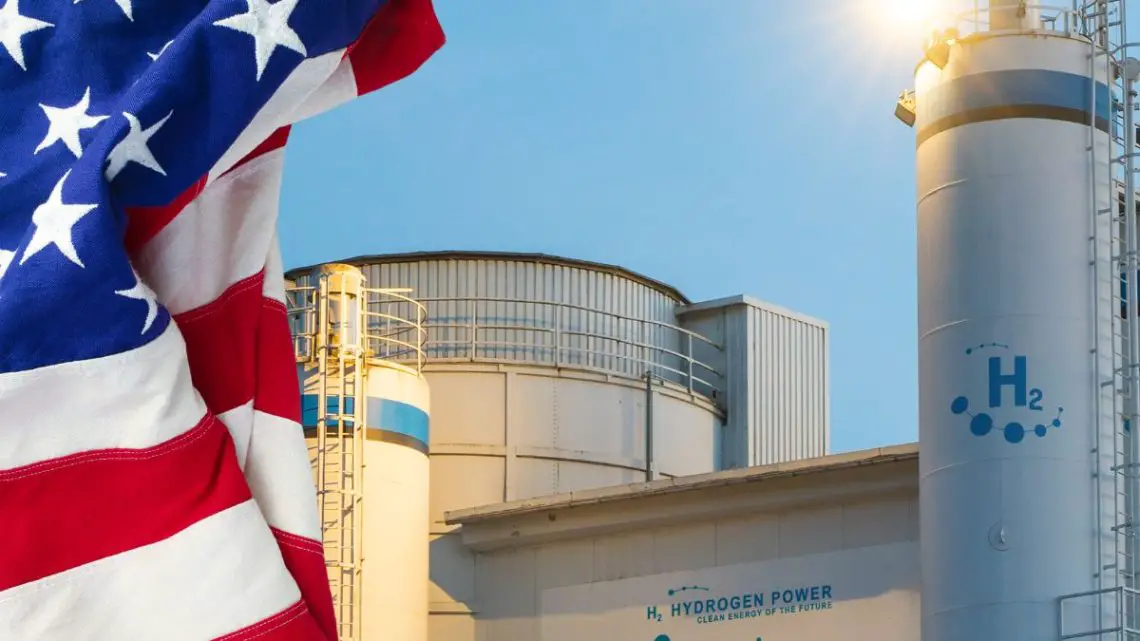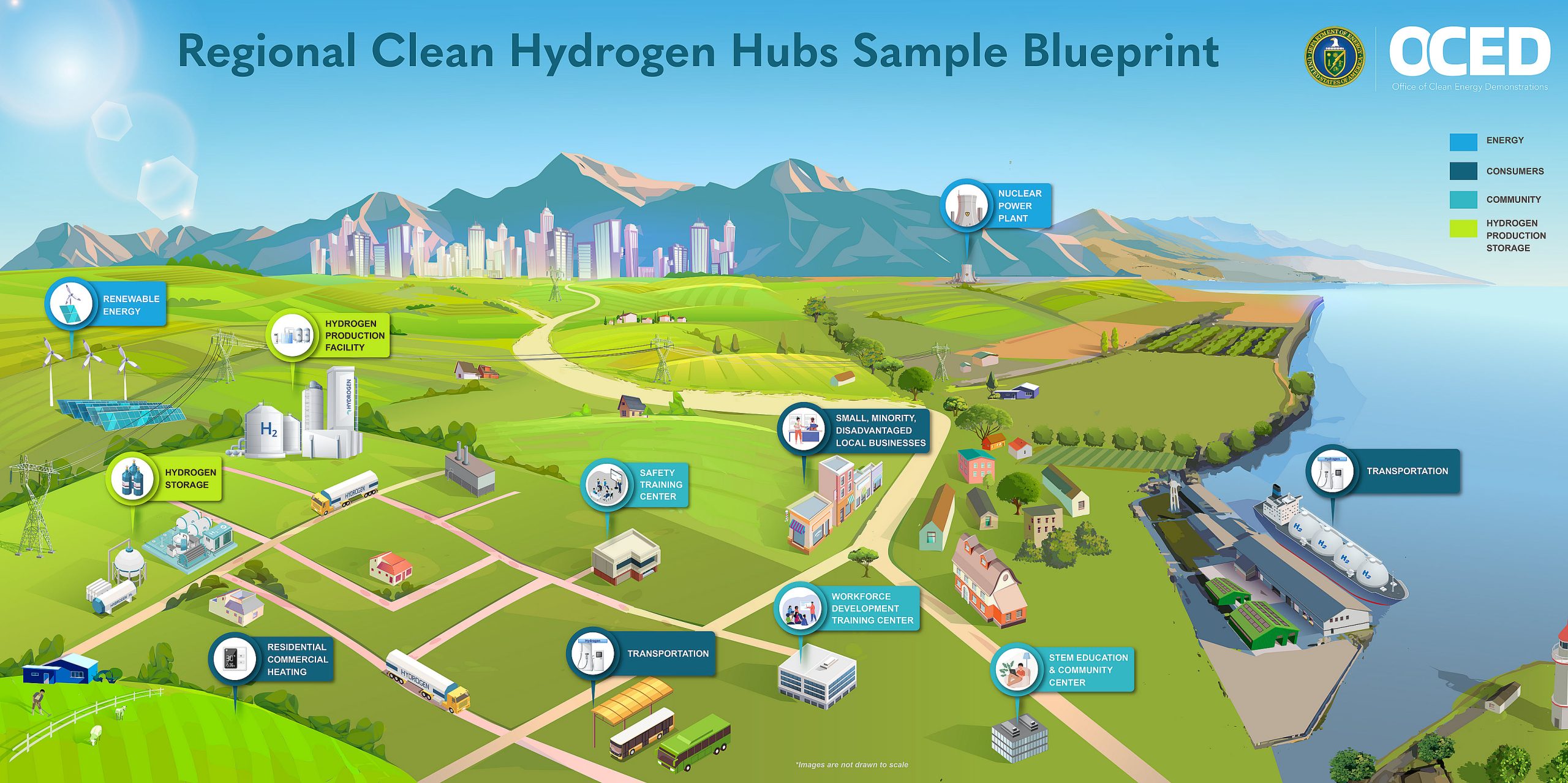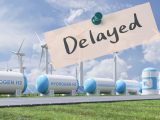
US Leaps To Second Place In The Hydrogen Progress Index: A Quantum Leap Towards A Greener Future
December 11, 2023In a remarkable testament to the power of innovation, collaboration, and strategic investment, the United States has made a monumental leap from 10th to 2nd place in the Hydrogen Progress Index in just two years, positioning itself as a global leader in the hydrogen industry. With Germany as the only country ahead in the rankings, this extraordinary achievement demonstrates the nation’s unwavering commitment to sustainable energy solutions.
The International Hydrogen Progress Index was developed jointly by Hydrogen UK and The Energy Networks Association (ENA) on behalf of Hydrogen UK’s members and ENA’s gas members.
The purpose of the Index is to compare the hydrogen commitments made at national governmental level in the UK and sixteen other countries in 2021 and summer 2023. The seventeen countries were scored across their hydrogen commitments in national strategy and supporting measures for hydrogen supply, infrastructure, demand, and standards.
So, what’s behind the United States’ meteoric rise? Mainly, it is attributed to the resolute dedication to growing its hydrogen economy, most notably through a visionary commitment of up to $7 billion in funding from the US Department of Energy (DoE) through the Bipartisan Infrastructure Law. This substantial financial injection is designed to facilitate the establishment of the H2Hubs plan, with seven hydrogen hubs across the nation poised to decarbonize hard-to-abate sectors like heavy industry and transportation.
As a leading provider of alternative energy refueling systems with expertise in hydrogen, compressed natural gas (CNG), and biofuels, ANGI Energy Systems (ANGI) is thrilled with this remarkable development. ANGI is part of Vontier, a global industrial technology company uniting critical mobility and multi-energy technologies and solutions to meet the needs of a rapidly evolving mobility ecosystem. The hydrogen hubs come as extremely positive news for the companies’ shared vision of a greener, more sustainable future.
The seven hubs, spanning the length and breadth of North America will help to stimulate critical projects across the hydrogen value chain and build momentum to solve the chicken-and-egg problem of hydrogen infrastructure or hydrogen vehicle development. Pleasingly, five out of the seven hubs are specifically targeted at hydrogen refueling.
The transformation of the US hydrogen landscape has been nothing short of exemplary, thanks to several factors.
The ambition and clarity from the Government in realizing the potential of hydrogen has been huge part of President Biden’s Investing in America agenda. The US set out very ambitious targets as part of its hydrogen strategy for net zero, and this coupled with demand, supply, and infrastructure has seen a clear vision. For example, the Draft DoE National Clean Hydrogen Strategy and Roadmap, which was published in September 2022 and finalized in June 2023. It states the US is to produce 50 Mtpa of clean hydrogen by 2050, with interim targets of 10 Mtpa by 2030 and 20 Mtpa by 2040 — up from “nearly zero” today. That is a remarkable feat. To help back this up, the US has more hydrogen pipelines than any other country in the world, with more than 1,600 miles of dedicated pipelines.
The country’s speed to act has also been the differentiator. Unlike other countries in the Hydrogen Progress Index that have slipped down the table, the US has been able to spot opportunities and act on them. There hasn’t been legislation delaying projects or political uncertainty around funding. The big initiatives and programs that are supported by the $7 billion investment will be instrumental in shaping the infrastructure and developing innovation within the hydrogen industry.
The US and players in alternative energy quickly recognized the importance of partnerships in building a robust supply chain for a new industry. Strong collaborations involving government, industry, and communities have been essential in driving progress. ANGI, for instance, is advancing the development of a North American hydrogen refueling network through partnerships with Nikola and Chart Industries. Collaborations like these, spanning the hydrogen value chain, are crucial for establishing a leading and sustainable hydrogen ecosystem, as reflected by the H2 Index. Continued exploration of opportunities across sectors will further solidify the US as a global leader in hydrogen development.
In addition to this, the utilization of targeted subsidies to drive innovation and incentivize the transition to zero-emission and low-carbon heavy transport have proved pivotal in accelerating the US’ hydrogen progress. The US provided local funding across the country to stimulate hydrogen uptake. The US also introduced a subsidy of up to $3 per kg of clean hydrogen depending on production conditions. Now, the $7bn injection into the US’ development of clean, alternative energy will futureproof not only transportation but energy security for the nation.

Image Credit: www.energy.gov
The road ahead
With the wind behind it from the $7bn funding, the US is on track to become a global leader in the hydrogen industry. However, industry must embrace the importance of hydrogen and recognize continued innovation, collaboration, and strategic investment as key drivers of progress.
A big part of this will be workforce development which will play a key role in ensuring the long-term success of the hydrogen industry. The H2Hubs plan will help create tens of thousands of jobs across the country while strengthening communities.
The intensifying debate over ‘blue’ vs. ‘green’ hydrogen will also need to be settled. Nearly all of the hydrogen available globally today is extracted from natural gas through steam methane reformation (SMR), creating so-called ‘grey’ hydrogen, which becomes ‘blue’ hydrogen when combined with carbon capture and storage. Critics argue the process is unsustainable and resource heavy. At ANGI, we advocate for a balanced approach to the blue and green hydrogen debate. Recognising the role of blue hydrogen as an interim solution is a pragmatic step toward a future dominated by green hydrogen.
And then there’s the question of speed of progress. It’s worth noting that the rollout of infrastructure is a slow and steady process. We need to be prepared for a marathon and not a sprint, with the right foundations laid early on to secure the future. For instance, there are multiple rounds of planning and approvals – as often comes with any new and disruptive technology. Agility and resourcefulness must come into play here to find working solutions ahead of any final state scenario. For instance, we are supporting customers such as Chart Industries with dispensers to build mobile hydrogen refueling trucks, that can support OEMs and fleets with fuel when and where they need it, whilst we wait for fixed infrastructure to reach scale.
In summary, the progress made by the United States in the hydrogen industry is a testament to the power of commitment, innovation, and collaboration, all values underpinning our own business at ANGI. We are proud that our two key hydrogen engineering centres of excellence, based in Wisconsin and also Salzkotten, Germany are gearing up to support widescale deployment of hydrogen refueling infrastructure across the US, EU and beyond. Through our own ambition, collaborative approach, and proactive team of hydrogen experts we are excited to be an influential part of this transformative journey and help to lay the foundations for a multi-energy future, that includes hydrogen playing a starring role.
By Joel van Rensburg – President of Alternative Fuels at ANGI Energy Systems, a Vontier Company.



 HFN News is your leading source for fresh hydrogen and renewable energy updates. Amid the fast-paced growth of hydrogen companies, we provide top-notch news and insights about this exciting sector. Our coverage spans from hydrogen cars to global sustainable initiatives, and we highlight the latest in green jobs and developing hydrogen hubs. We invite you to share your local hydrogen news and explore today’s renewable energy job listings on our site. Thanks for choosing HFN News as your trusted guide to the hydrogen and renewable energy world!
HFN News is your leading source for fresh hydrogen and renewable energy updates. Amid the fast-paced growth of hydrogen companies, we provide top-notch news and insights about this exciting sector. Our coverage spans from hydrogen cars to global sustainable initiatives, and we highlight the latest in green jobs and developing hydrogen hubs. We invite you to share your local hydrogen news and explore today’s renewable energy job listings on our site. Thanks for choosing HFN News as your trusted guide to the hydrogen and renewable energy world!